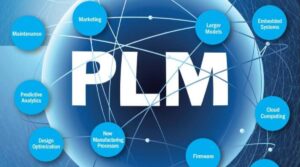
Product Lifecycle Management or PLM refers to the process of managing a product from its conception through design and manufacturing to service and disposal. With products becoming more complex, interconnected and customized than ever before, effective PLM has become critical for businesses looking to stay ahead of the curve. This article explores the key aspects of PLM and how it helps companies optimize resources while catering to evolving customer demands.
Introduction to PLM
Product Lifecycle Management involves coordinating different departments and stages involved in bringing a product to market. These include concept development, product design, manufacturing process planning, quality control, service and maintenance support and end-of-life management. By integrating people, data, processes and business systems, PLM provides a product “golden thread” from conception to the aftermarket. This ensures consistency and reusability of product information across a company.
PLM software systems form the backbone of a company’s PLM implementation. They manage the entire lifecycle data, processes, business rules and structure for individual products. Some key functions of a PLM system include computer-aided design (CAD), product portfolio management, quality tracking, cost estimation and supplier collaboration platforms. Many also interface with other enterprise systems like ERP, SCM and CRM for a unified digital thread.
Benefits of Implementing PLM
There are compelling benefits that brands reap by adopting a structured PLM approach.
Improved Product Quality – With all product data centralized and flowing seamlessly between teams and stages, defects are caught earlier. Version control prevents mix-ups.
Accelerated Time-to-Market – Concurrent engineering across functions helps identifying and resolving issues faster. Changes can be implemented seamlessly.
Optimized Costs – Easier reuse of designs and components cuts waste. Better cost planning allows reducing overdesign or underdesign.
Compliance Management – Regulations and standards are tracked per product. Required documents for approvals are automatically generated.
Enhanced Collaboration – Remote/global teams seamlessly work together on a common data platform with workflows.
Insights for Innovation – Historical usage and service data helps create new derivatives and recommend upgrades proactively.
Thus, PLM provides the means for brands to streamline product development, enhance competitiveness and profitability through optimized deliveries at lower costs.
Key PLM Processes
Let’s take a deeper look at some core PLM processes and the stages they cover:
Concept Development – Ideas are captured, evaluated and defined here with specifications and target attributes identified. Prototyping and proof-of-concept testing occur.
Product Design – Engineers and designers leverage CAD tools to model, test and refine the design per requirements. Multiple iterations may occur until the design is frozen.
Manufacturing Process Planning – How the final design will be manufactured is determined, from procurement to factory planning and requirements. Bill of materials, tooling requirements etc. are finalized.
Quality Management – Quality standards and controls like inspections, approvals, non-conformance tracking and corrective actions are enforced through this stage.
Manufacturing Execution – The production line runs as planned with real-time tracking of inventory, labor and outputs. Issues are resolved seamlessly.
Service and Maintenance – Feedback from after-sales is gathered. Updates, repairs and end-of-life management like recycling are handled.
Thus, integrated PLM coordinates people, resources and activities across these different product development stages for efficiency.
Cutting-Edge PLM Trends
PLM solutions continue to evolve by embracing emerging technologies. Here are some prominent trends:
Cloud PLM – Software, data and tools are hosted remotely over the cloud for seamless access from anywhere. No large on-premise installations needed.
PLM Suites – Integrated suites cover the full spectrum of engineering, manufacturing and aftermarket functions in a unified interface.
Augmented Reality (AR) – AR is used for remote interactive training, interactive manuals, virtual prototyping and more.
Big Data and Analytics – Product usage data from IoT feeds back into design. Predictive Failure Analysis improves quality.
Artificial Intelligence (AI) – AI assists engineers with tasks like design validation, performance evaluation, documentation and more.
3D Printing – 3D models in PLM directly drive 3D printing of parts on-demand for rapid prototyping or production.
These innovations make PLM ever more flexible, collaborative, data-driven and automated for maximizing business value.
Conclusion
In today’s quickly evolving marketplace, speed, quality and cost optimization are key to business success. By taking a life-cycle view of product development supported by integrated platforms and processes, companies can Product Lifecycle Management respond rapidly to changing customer demands and competitive pressures. Those leveraging modern PLM approaches gain a significant competitive advantage in turning ideas into commercially successful products faster and more profitably than their peers. PLM thus stands out as a strategic imperative for businesses looking to stay ahead of the curve.
*Note:
1. Source: Coherent Market Insights, Public sources, Desk research
2. We have leveraged AI tools to mine information and compile it



